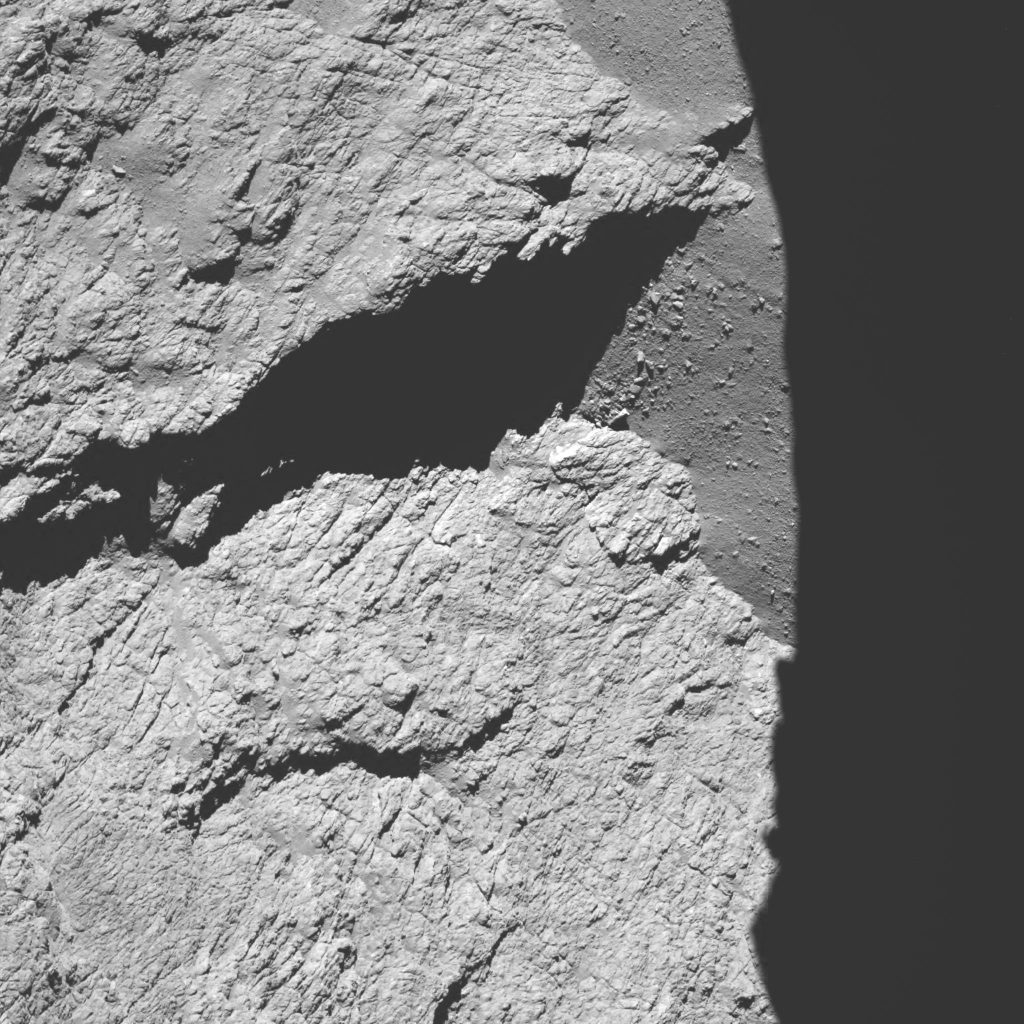During Rosetta’s final descent, which is currently undergoing, the OSIRIS narrow-angle camera captured this image of Comet 67P/Churyumov-Gerasimenko at 05:25 GMT from an altitude of about 11.7 km.
With dramatic shadows, the image shows the comet’s ‘neck’ region, with the smooth terrains of Hapi on the right and the rougher Hathor on the left.

Comet 67P/C-G viewed with Rosetta’s OSIRIS NAC on 30 September 2016, 11.7 km from the surface. Credit: ESA/Rosetta/MPS for OSIRIS Team MPS/UPD/LAM/IAA/SSO/INTA/UPM/DASP/IDA
The image scale is about 22 cm/pixel and the image measures about 450 m across.









Discussion: 6 comments
Awesome image
@Wayne,
Agreed. And there have been many. Perhaps ESA can compile a screensaver or themepack based on these images. I might have a go myself. Just need to download the ‘singing comet’ track for the audio effects, and try to figure out how to make some Rosetta and Philae cursors!
Farewell Rosetta you robotic nomad in the deepest reaches of orbit around our sun.Now a passenger aboard the comet you explored. Perhaps some day in the farthest future we may come and carry you home again along with your partner. Thank you for educating us and increasing further our knowledge of those vast mysteries that float in the cold dArk vacuum of space.
Correction to my last post. 5.7 km image not 5.3, sorry.
But the last two images are only about 1km apart. So it would seem there was time for another three images, especially with Rosetta speeding up dramatically due to gravity near the very end, for additional images to be taken between the 5.7 and the 1.2 km shots?
If there are no more images, I guess it makes good sense that they dedicated that beaming time to science transmissions?
Oh, one more question… I saw on this incredibly comprehensive blog long ago where the Osiris Cam, or a clone, could focus up to 15 meters in the laboratory or offices of ESA. Why then, is the final image blurry at 60 meters? I do seem to detect some rotational blurring, but mostly overall fuzziness..Guessing that Rosetta had picked up speed and aperture was open long enough to create a “zoom blur”?
Thanks again!
Oh, and by the way, this blog has been so in depth and illuminating, full of evolving information, images, breaking science and ideas, and will continue to be, that there could be a strong argument to create an actual college course, perhaps in part, towards an astrophysics or other degree!
Think about that…
I am sure that could never have been stated before now! Congratulations for the rest of your lives, Rosetta Team!
Rosetta and Philae and Team live on!
Thanks Ramcomet!
I think you answered your own questions in a later post 🙂 but just to confirm indeed there were more images taken than were shown in the short livestream transmissions, with the last from around 20m. Also other science data transmitted during the final moments too. I hope we will be able to share more news from the various teams soon, as to how that all went!
Thank you Emily! Looking forward to more revelations from you indeed!